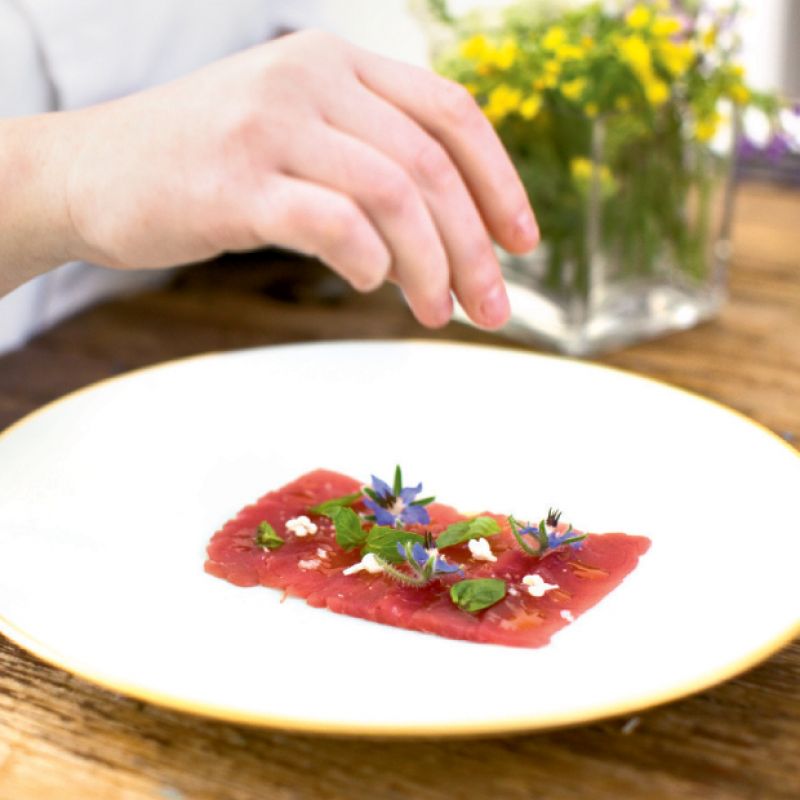
Forget parsley bunches and watercress sprigs—a crop of creative area chefs are garnishing (and seasoning!) their fare with gorgeous edible flowers grown right here in the Lowcountry. Given the increased focus on farm-to-table ingredients, the shift makes sense—especially in Charleston, where our humid, subtropical climate nurtures a year-round growing season for many flavor-packed flora.
To taste the trend, pop by McCrady’s, where you can feast on steamed clams elevated by a tangy marigold-infused butter. Or pay a visit to Cannon Green, where chef Amalia Scatena tops tuna crudo with blue borage flowers, which provide a cucumber-like crunch. For these chefs, petals are more than just pretty: they offer flavor profiles ranging from savory to vegetal to floral, and can have a big impact on how a dish tastes. For example, The Drawing Room chef Jon Cropf relies on fruity hibiscus flowers to balance the spice of his olive-stuffed squid.
“Edible flowers can flavor dishes just as well as actual vegetables or herbs.” —Daniel Heinze, McCrady’s chef de cuisine
“Edible flowers are an interesting way to add color to a dish while also boosting flavor,” Cropf says, pointing out that those from some plants—including onion, wild garlic, and wild mustard—actually provide a more concentrated flavor dose than their vegetable companions. In fact, McCrady’s chef de cuisine Daniel Heinze often uses just the petals of the wild garlic flower because they pack such punch. “Edible flowers can flavor dishes just as well as actual vegetables or herbs,” Heinze notes. “Plus, using these blooms is a good way to express every part of the plant.”
This desire to use plants in their entirety has shifted the way growers regard what they reap. While plants that have “gone to seed,” or entered the flowering and seed-production phase, were once deemed done for the season, savvy farmers now offer chefs the blossoms, often at peak price. “This way, we all get an extra little something from the plant,” says baker and farmer Amy Robinette, who tends McCrady’s rooftop garden when she’s not turning out baked goods for The Cake Farmer, her dessert-focused catering company. In fact, Robinette often uses basil flowers in her own sweets. Though she admits that harvesting the dainty delicacies is tedious, she says the flavor impact is worth the extra effort.
When it comes to cooking with flowers, chefs draw inspiration from both farmers and fellow culinarians. On a road trip with McCrady’s chef/partner Sean Brock, Heinze learned that begonias deliver a pucker-up sourness—knowledge he put to work in a dish of steak tartare with farro, chervil, and begonia flowers. For his part, Cropf heads to family-run herb farm Sea Island Savory on John’s Island for edible-flower taste tests. He also sources from The Drawing Room’s own rooftop growing area. Sprouting selections ranging from angelica to violas, the on-site garden provides him with more fodder for kitchen experiments. “When a dish is lacking acid, we might try lemon balm flower to round it out,” he explains.
If the current trend continues, expect to see a bouquet of blossom-laden dishes while dining out this summer. Indeed, in this city known for its flourishing gardens and farm-fresh cuisine, peppery brassica flowers and spicy nasturtiums make a fine addition to the table.